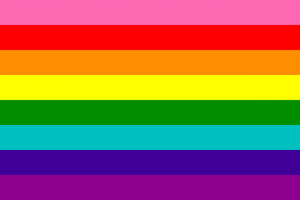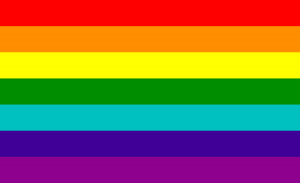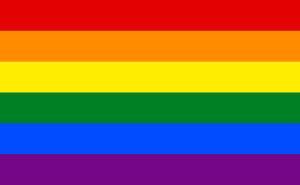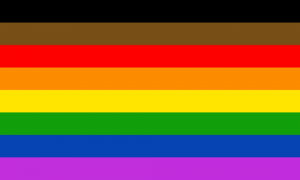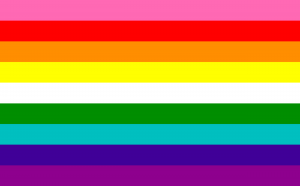Throughout history, a lot has happened to get to the Pride flag that we all recognize today. While you may recognize the six-stripe rainbow flag as the standard, there are seven, eight, and nine-stripe variants, which all signify different things. Have a look through our flag 101 and find out what each stripe means and where the flag and its revisions came from. Let us know the flag love the most in the comments.
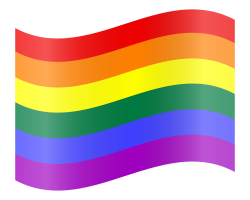
Beyond the flags, there are many terms that people may use throughout Pride. Terms relate to different sexual orientations and gender identities, and describe the movement and events themselves. Beginning in the mid to late ’80s, “LGB” was a term that was used to replace “gay” in reference to the community which identified as either lesbian, gay, or bisexual. Activists decided that the term “gay community” didn’t represent all the people that it referred to. Since the ’90s this has been adapted to LGBT, to encompass people who identify as transgender as well.
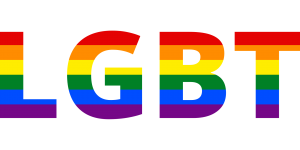
This initialism is broadly used to emphasize sexual and gender-identity diversity, however, in order to make the term more inclusive, other variants are also commonly used. The addition of a Q – becoming LGBTQ – adds an initial standing for queer. This is an umbrella term that covers those who are not heterosexual or cisgender (someone whose sense of identity/gender is the same as their birth sex) as well as those questioning their identity. The most popular current term is LGBTQ+, which covers everything that we’ve already talked about, as well as other spectrums of sexuality and gender identity.
Rainbow Pride Flag History
Gilbert Baker designed the original Pride flag in 1978. He gave it eight stripes, and each stood for something different. Pink for sexuality, red for life, orange for healing, yellow for the sun, green for nature, turquoise for art, indigo for harmony and finally violet for spirit.
Thirty volunteers dyed, and hand-stitched the first two flags for the Pride parade that year. These two flags currently fly over the LGBT Community Center in New York City and the Castro in San Francisco.
Harvey Milk, the first openly gay elected official, was assassinated in November of 1978. Demand increased for the rainbow Pride flag immensely. The Paramount Flag Company began selling a seven-stripe version of the flag to help meet this high demand. As Gilbert Baker also ramped his production up, he too dropped the hot pink stripe. During this year there wasn’t enough availability of the hot-pink fabric. This seven-stripe version stayed in use from 1978 to 1979.
The flag hung in San Francisco from lampposts in Market Street, which meant that they fell vertically. This, however, meant that the post obscured the green center stripe.
The way they remedied the situation was to redesign the flag once more. In 1979 San Francisco removed the turquoise stripe, which gave us the six-stripe version. In 1989, the rainbow flag began getting nationwide – and ultimately worldwide – recognition. This six-stripe version is the most popular flag today.
New Rainbow Pride Flag Designs
Philadelphia City Hall created a new Pride Flag in 2017. They added a black and a brown stripe to the six-stripe popular flag. They said this was “to highlight black and brown LGBTQIA members within the city’s community.”
During carnival in Sao Paulo, Brazil released a nine-stripe Pride flag in 2018. At Love Fest Festival, in February, the original eight-stripe flag had a ninth, white stripe added to the center.
This white stripe is to represent all colors combined and signifies human diversity not only in terms of gender and sex preferences, but also religion and ethnicities. The nine-stripe 2018 flag design is to show peace and union among all.



